Modern Day Witness
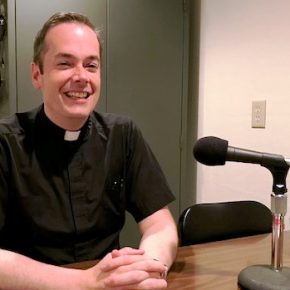
Modern Day Witness is written by Father Richard Jasper, Associate Pastor of St. Ann Church in Wilmington, Delaware, to highlight the lives and work of Catholic men and women, many of whom have lived and worked in recent years, who are models of discipleship. Father Jasper will present a new edition of Modern Day Witness most weeks on the Catholic Forum radio program/podcast, beginning April 27, 2019.
Here are a few Modern Day Witnesses:

Born on September 7th, 1975, near Barcelona, Rebeca Rocamora Nadal, is the second of four sisters. Prior to her conception, her parents had lost a child only two months before that child was due.
Growing up in a solidly-Catholic home, she learned the value of hard work and the need for prayer from her dad (a shoe store manager) and her mother, who juggled full-time motherhood with working outside the home.
While growing up, she was known for her beauty, spontaneity, sweetness and a love for learning. Shortly after her First Holy Communion, however, she started battling symptoms related to diabetes, and later, a tumor on her pituitary gland. She was only 10 years old.
Throughout the next decade, Rebeca Rocamora Nadal received a miraculous healing of ocular paralysis through the intercession of Saint Gemma Galgani, and although radiation and other medications shrunk the pituitary tumor, it ultimately caused a sudden paralysis in her late teens that caused much suffering and left her homebound. However, Rebeca grew in prayer and compassion for others before dying at age 20 on Pentecost Sunday 1996. Her family was by her bedside, praying the Rosary as she died.
Rebeca’s home diocese opened her cause for canonization in 2009.
Michael McGivney was born to Irish immigrant parents in Waterbury, Connecticut, in 1852, he was the eldest of 13 children, six of whom died in infancy or childhood.

Having attended Waterbury public schools until 8th grade, he left at age 13 to make spoons in the same brass mill where his dad worked.
At age 16, he decided to enter seminary to prepare for priesthood. His studies took him to formation programs in both Montreal and Niagara Falls, NY, until the death of his father forced him to leave and return home to help his family.
In time, Michael McGivney returned to finish studies at St Mary’s Seminary, Baltimore, and was ordained in 1877. Deeply affected by the death of his dad and seeing how so many Catholic immigrant families struggled financially, he formed the Knights of Columbus in New Haven in 1882 as a charitable and fraternal outreach of the Catholic Church.
Father McGivney died of pneumonia at age 38 on the eve of the Assumption in 1890, brought about no doubt by his tireless work for his parishioners. He was declared ‘venerable’ in 2008, and a 2013 miracle attributed to McGivney is currently under investigation.
Pauline Mallinckrodt was born in Minden, Germany, in 1817, and raised by a devout Catholic mother and Lutheran father. Her younger brother went on to become a distinguished parliamentarian in Germany’s government.
After traveling much and receiving a solid Catholic education as a child, she was required by her parents to attend high society functions in her teen years, much to her dismay but willingly done in obedience to them. This all

changed when her mother became ill and died of typhus in 1834.
Only 17 and taking over care of the house and education of her three younger siblings, she also found time to care for the sick of her community and open a kindergarten with a group of women dedicated to such charitable works. This eventually led to her seeking to place her ministries under the care of St. Madeleine Sophie Barat’s religious community, who rejected that plan.
Thus, in 1849, Pauline Mallinckrodt began her own religious community — the Sisters of Christian Charity — which became so wildly successful in Germany that it spread to New Orleans, La., where she herself opened their American motherhouse. She continued opening new establishments until she died from pneumonia in 1881 at age 63. The miracle that led to Mother Pauline’s 2007 beatification occurred in Detroit. One more miracle is needed for her canonization.
Born in 1946 and raised in Upper Darby, Pa., William Atkinson attended St. Alice Catholic Grade School and Monsignor Bonner High School before entering the Augustinian novitiate (the same friars who taught him) in New York in 1964.

While tobogganing with fellow classmates that first year of formation, he was involved in an accident that resulted in permanent paralysis from the neck-down. He was 19 at the time and sent from a hospital in Poughkeepsie to Magee Rehab in Philly.
Expressing a desire to continue studying for priesthood with the Augustinians, he was given a special dispensation to be ordained from Pope Paul VI (with Philadelphia Cardinal John Krol’s assistance), which occurred in his hometown parish in 1974.
From that point until a year before his death at age 60, Father Bill Atkinson was stationed at Monsignor Bonner High School in Drexel Hill, where he taught theology to the senior class. For over 30 years there, Father inspired generations of young men as their teacher, confessor, moderator of the football team and proctor of JUG (detention) with his deep faith, humility, quiet strength and sense of humor.
Father Bill’s cause for canonization was opened in 2017, and he is now officially declared a ‘Servant of God.’ In his own poetic words: “Day after day, help of others along the way … I simply borrow the strength of others.” (Note: Father Bill taught Father Jasper in high school at Msgr. Bonner)
Darwin Ramos was born in 1994 in the Philippines and was raised in an impoverished neighborhood located among the intersecting tracks of two light-rail lines. His father suffered from alcoholism; his mother worked as a laundress in order to financially support the growing family.
By age 7, he and his sister became full-time scavengers at local garbage dumps, looking for plastic to sell in order to

support their mother. Neither he nor his siblings ever went to school.
Before his teen years, he began stumbling often and his muscles got progressively weaker. Eventually diagnosed with a form of muscular dystrophy, he was forced by his father to use his disability to beg for money at a stop on the light-rail line. Despite his shame in doing so, he did it so his family could eat.
At age 12, Darwin Ramos was taken-in by a Church-sponsored group that specializes in educating children and teens with disabilities. Baptized Catholic by the end of that year, he began offering his illness and paying for other children at the mission. Within a few years, Darwin was suffering severe respiratory distress (related to muscular dystrophy) and daily spiritual battles, finally succumbing to his illness in 2012 at age 17. His final words in his journal? “A huge thank you. I am very happy.”
Darwin’s cause for canonization was just opened last year in the Philippines.
Born in Shenandoah, Pennsylvania, in 1904 to Polish immigrant parents, Walter Ciszek, was known in his

neighborhood as a “tough punk kid” who often excelled in all athletic challenges and imposed upon himself many mortifications just to prove how strong he was.
Needless to say, he shocked his family and friends when he decided to become a priest, entering the Jesuit novitiate in 1928. While still a seminarian, he volunteered to serve as a missionary to the Soviet Union.
After ordination, he snuck into the Ural Mountain region of Russia, living as an unskilled logger while discreetly offering Mass and performing other sacramental ministries. He was ultimately turned-in to authorities.
Arrested under accusations of espionage for the Vatican and sent to prison in Moscow, Father Walter Ciszek spent five years in prison and another 15 years of hard labor (in the mines) in the Siberian GULAG. Until 1955, he was presumed dead by his family and the Jesuits, and yet all the while, he kept secretly ministering to fellow prisoners as a priest.
Released from the Soviet Union in 1963 after 23 years of imprisonment, he returned to New York and was quoted as saying upon landing: “I am an American, happy to be home; but in many ways I am almost a stranger here.”
Father Ciszek died on the Feast of the Immaculate Conception in 1984 and is buried at the Jesuit Retreat Center in Wernersville, Pa. The Diocese of Allentown, Pa., is handling his cause for canonization.
Ida Peterfy was born in 1922 in Hungary and raised in a devout Catholic family, she was a Girl Scout and a youth member of the Sacred Heart League.
As the horror of World War II began to unfold, she and her family helped many Jews escape Nazi detection. She

also broke up with her boyfriend once she discovered his anti-Semitic beliefs.
Following a powerful 3-day retreat, she gathered some fellow now-adult Girl Scouts and began teaching children the Gospel in order to keep them from joining both the Nazi and Communist parties. She took vows before the local bishop and began forming a religious community devoted to the Sacred Heart. (She was ahead of her time in that she believed her sisters need not wear a distinctive habit as was the common requirement before the 1960s.)
As the Communist party was out to get her, Ida Peterfy left for the United States, where she opened Catholic youth camps and religious education programs in San Bernardino and Santa Ana, California, during the tumultuous time following Vatican II. Many sisters left the congregation because they believed she was “too old fashioned.” Nevertheless, Sr. Ida continued teaching children in California until her death at age 77 in 2000, including a brief stint as host of a popular children’s TV show airing in Southern California (at the same time Mr. Rogers was beginning his work on Pittsburgh TV).
The Archdiocese of Los Angeles has recently declared Sister Ida a ‘Servant of God.’
Born to an Irish American working-class family in lower Manhattan in 1886, John McAuliffe’s father, a dockworker, and his mother — his dad’s second wife — raised a family of five children (only three of whom survived to adulthood).

Baptized with the name ‘John’ at three months of age, he would lose both his mom and dad to unexpected, sudden illnesses by the time he was 9. He was sent to a Catholic orphanage with his siblings, but after a destructive fire there, he was separated from them and sent to live at another orphanage in Troy, New York.
Attracted to the life of a religious brother (especially those who worked in orphanages), he joined the Brothers of the Sacred Heart in Metuchen, NJ, in 1902. He spent many years teaching in Indianapolis, Oklahoma, and Mississippi.
After years of teaching, John McAuliffe — now known as Brother Norbert — volunteered to begin missionary work in Uganda, starting schools there and, through his holy witness, raising up a generation of new African vocations.
Brother Norbert died in Uganda on July 3, 1959, after a brief illness. He was 72. Brother was recently named a ‘Servant of God’ after the Diocese of Gulu reviewed his life.
Born in Austria-Hungary in 1865, Pauline Visitainer and her family were poor Catholics who emigrated to Brazil in 1875 along with a fifth of her hometown’s population. Together, as one group, they founded the village of Nova Trento in Brazil.
Although receiving very little academic training, she was formed well in the faith and became known for her piety and compassion for the suffering poor.

At age 24, Pauline and her friend committed their lives to religious service and began by taking care of a neighbor suffering from terminal cancer. As more people were in need of the women’s help, she felt called to begin an official
religious congregation sponsored by the Church.
Taking vows in her new community, called The Little Sisters of the Immaculate Conception, Pauline Visitainer (Mother Pauline of the Agonizing Heart of Jesus) spent most of her life caring for orphaned children of former slaves. (Brazil ended slavery officially in 1888.)
In time, Mother Pauline began a slow, agonizing battle with diabetes, eventually losing her right arm and vision before dying at age 76. Her final words: “God’s will be done.”
Mother Pauline, Brazil’s first female saint, was canonized in 2002 by Pope John Paul II. A family relative has opened a shrine dedicated to Pauline in Kulpmont, Northumberland County, Pa., where her relics are now displayed for veneration.
Born just outside Florence, Italy, in 1907, Amata Cerretelli was the firstborn child of devout parents who had her baptized immediately. Although a prayerful girl, she ran away from the Communion line on the day of her First

Holy Communion, sobbing. (Fortunately, her parents were able to bring her back, where she received our Lord calmly.)
From the age of 9, she began to experience acute rheumatism of the arteries, which caused her excruciating pain. Walking was difficult, and her morale would often suffer.
By the age of 18, Amata was confined to bed for 6 months and was told she would die within the year. She recovered, however, and while still suffering with incredible pain, she was able to support her parents through their financial and legal woes by working in an artificial flower factory and store.
Although encouraged by friends to either marry or become a nun, Amata Cerretelli remained single throughout her life. She did start a Catholic movement after World War II called “La Famiglia,” a Carmelite spirituality-based group whose focus is to unite suffering with prayer for others.
Exhausted after decades of physical pain, Amata died at the end of January 1963 at the age of 55. Her “La Famiglia” movement is still growing in Italy, and her cause was recently opened in order to explore the possibility of sainthood.
Born in 1954 in Kerala, India, Rani Maria Vattalil was the second of seven children and baptized within a week of birth, having been named after the Mother of God.
Educated in Kerala’s public schools, Rani entered the Franciscan Clarist Congregation following high school

graduation. Both she and her cousin entered the same community together in 1971.
After her profession of vows, she served for nearly two decades as a teacher, coordinator of social activities, a temporary contemplative sister, and superior of a local convent. She also went on to obtain a degree in sociology in the early 1990s.
In 1995, while riding a mass transit bus, Sister Rani Maria Vattalil was murdered by three hitman hired by local landlords who were displeased with Sister’s work among the landless poor. Stabbed 40 times, dragged off the bus and left on the side of the highway (while no one else on the bus intervened), Sister Rani was 41 years old at the time of her death.
Sister was beatified by Pope Francis in 2017. Her murderer was released from prison in 2016 after having begged for mercy upon being offered forgiveness from Rani’s family. They now consider him a part of their own family, and he was able to attend her beatification alongside her siblings.
Born in 1943 in Abruzzi, Italy, Nicola D’Onofrio, was raised by humble farming parents who made sure he received a good Catholic education and encouraged him to serve daily Mass at his parish church — even in the dead of winter — which he did willingly.
Desiring to become a religious priest after graduating high school, he wanted to join the order founded by Camillus de Lellis, a saint from a previous generation also from his same small village. His parents and aunts, however, objected to his entering the community; they believed diocesan priesthood would allow him to stay close to home.
In time, his parents relented, and he was allowed to enter the Order of St. Camillus in 1955, although his father tried
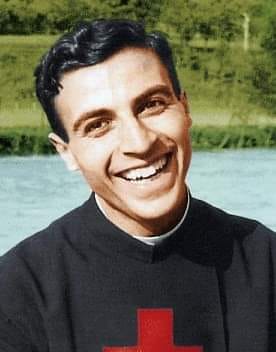
again two years later to have his son return home. Despite the obstacles, he took his first vows with the community and remained humble and joyfully simple in his period of formation.
In 1962, Nicola D’Onofrio was diagnosed with cancer at age 19. Hospitalized and often in great pain, he was allowed to continue his priestly studies even as his physical condition worsened. Praying to Our Lady and his favorite Saint Therese, he was eventually granted permission by Pope Paul VI to take his perpetual (lifetime) vows early, and while still a seminarian he consecrated himself to the Sacred Heart of Jesus only two weeks before dying at age 21 in 1964.
Seminarian Nicola’s canonization process began in Rome in 2000, and he is at present declared ‘Venerable’ following the miraculous healing of a 23-year-old Chilean woman who was completely cured of cerebral palsy as a result of his intercession.
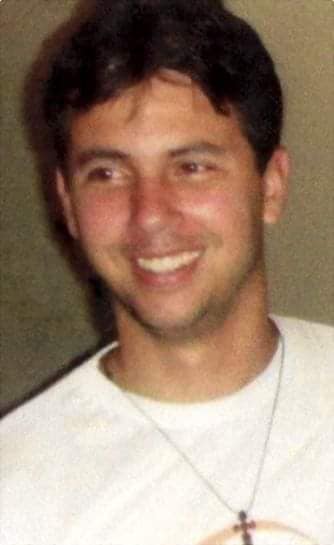
Guido Schaffer was born in Rio Janeiro in 1974 and spent much of his boyhood at the beach, learning to surf.
Choosing to study medicine in college, he followed in the footsteps of his father. After residency, he joined the medical
staff of the Holy House of Mercy Hospital in Rio, where he was a general practitioner who specialized in the treatment of people living with HIV/AIDS.
As a man of faith, he was dedicated to reading Scripture and attending daily Mass. While on retreat in 1999, he felt called to work as a doctor among the poorest of the poor, and thus joined Mother Teresa’s Sisters of Charity as a physician caring for their sick and dying residents in Rio.
By 2008, Guido Schaffer began studies to be a diocesan priest in the Archdiocese of Rio de Janeiro. One year later, at age 34 (and still a seminarian), Guido died as a result of a neck injury while surfing that caused unconsciousness and drowning. At his funeral, attended by over 1,700 people, the archbishop placed a stole worn by priests in Guido’s hands, saying, “The church so full shows me that this man was a good shepherd and as I know of his desire to be a priest, I place the stole in his hands to present to our Lord.”
In 2015, the Archdiocese of Rio declared Guido a ‘Servant of God.
Born in Robbinsdale, Minnesota, in 1960, Tim Vakoc graduated from Benilde- Saint Margaret’s in the Twin Cities metro area and later from Saint Cloud State University, where he was a member of the Tau Kappa Epsilon fraternity.
Choosing to enter the seminary after college, he was ordained a diocesan priest for Saint Paul-Minneapolis in 1992. After four years as an associate pastor, he left to become an army chaplain.
Receiving his commission as a lieutenant in the Army chaplain corps in 1996, he traveled with American troops to Germany, Bosnia and Korea. In 2003, he was sent to Iraq where he celebrated Mass and tended to the spiritual needs of
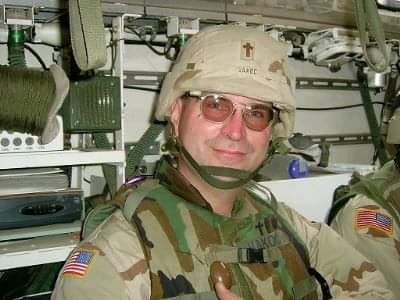
his soldiers in Mosul.
On the 12th anniversary of his ordination (May 29, 2004), Father Tim Vakoc sustained serious head trauma when his Humvee struck a roadside bomb. In a coma for six months and back at Walter Reed, Father Tim awoke and made considerable improvement, communicating through the use of a computer. Never able to leave his bed, Father Tim eventually succumbed to his injuries in 2009 at a nursing home in New Hope, Minnesota.
In his final years, Vakoc was known for his grace, patience and sense of humor even while carrying his cross. No official cause for canonization has been opened yet, although many are beginning to explore the possibility.
Born in Mexico in 1866, Maria Luisa Josefa, was the third (and first surviving) of 14 children. Although feeling drawn to religious life at age 15, she instead married a physician twice her age in obedience to her parents’ wishes.
Living a happy life as a married couple, she and her husband remained childless but worked together to establish Sacred Heart Hospital in Mexico to serve the less fortunate.
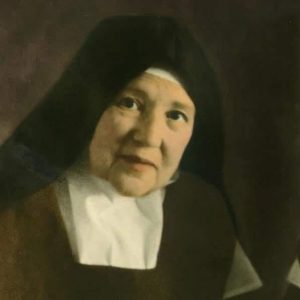
When she became a widow after 14 years of marriage, she asked permission to join the cloistered Carmelites. After only seven months there, however, the local archbishop asked her to return to work at her hospital, which she did in obedience.
In time, Mother Luisita, as she was now known, founded a religious community — the Carmelite Sisters of the Sacred Heart — to unite the spirit of living a cloistered life with an active education/heathcare apostolate. Forced to flee the religious persecution of Catholics in Mexico in the early 1900s, she and two Sisters fled to southern California, where the Carmelite Sisters of the Most Sacred Heart of Los Angeles were founded.
Mother Luisita died in 1937 at age 50. In 2000, Pope John Paul II declared her ‘venerable,’ and to this day her congregation remains strong in Los Angeles, Miami, Colorado and Arizona.
Sister Cecilia Schelingova was born in northern Slovakia on Christmas Eve in 1916, she was the tenth of 11 children and baptized immediately after her birth.
When a group of religious sisters came to her town as teachers in 1929, she requested to join the congregation but was
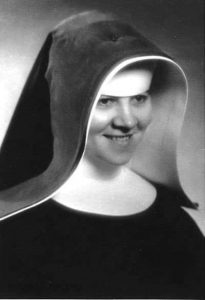
refused entrance until she completed both a nursing and radiology course.
Having completed what was asked of her, she became a religious sister with the Sisters of Charity of the Holy Cross, who sent her to work in the radiology department at a hospital in the Ukraine. It was here where she ministered to the countless priests who were hospitalized after beatings and torture from the country’s Communist regime.
After having been discovered slipping sleeping pills into a guard’s tea so that a priest could escape the hospital, Sister Cecilia Schelingova was herself arrested and tortured. She was sentenced to 10 years of prison, and it was here where guards cut off her breast and kicked her repeatedly.
Sister Cecilia died in 1955 at age 38 after an early release from prison due to the torture she underwent. She was able to receive Last Rites the morning she died.
Sister was beatified in 2003 and declared a martyr for what she endured. An alleged miracle which may lead to her canonization is currently being investigated in the Archdiocese of Denver.
Dina Belanger was born in 1897 in Quebec, she had a younger brother born only 17 months after her but who died at only three months of age.
Known for her love of prayer and attending Mass as a child, she also had quite the temper. When, during a moment of anger, she watched her father throw a temper tantrum similar to hers (he was play-acting to prove a point), she vowed
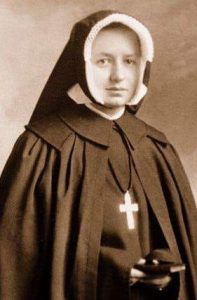
from that point on to never throw a tantrum again.
Sent to live in a convent boarding school, she became an accomplished musician/pianist. Although she wanted to enter the convent in high school, she was advised to wait and instead sent to New York’s Institute of Musical Art to further her talent and perform in concerts.
Once finished her time in New York, Dina Belanger entered the community of the Religious of Jesus and Mary in Canada, making vows in 1923. She was sent to teach piano but soon after arriving at her mission, she contracted scarlet fever and later tuberculosis. She died at age 32 in 1929 from TB.
Sister Dina was beatified in 1993. When her cause was first opened in Quebec, her parents were alive to testify to her holiness of life. Beautifully, a musical festival named in her honor continues each year in Canada.
Sister Cecilia Maria was born in Argentina in 1973 to a large Catholic family, she often dreamed of one day getting married, even having picked out the chapel where the ceremony was to take place.
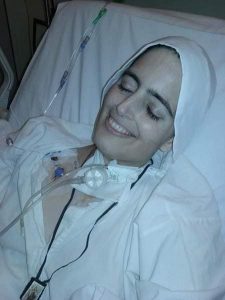
As she entered high school, she fell in love with a fellow classmate whom she had hope to one day marry. In college, she studied nursing and received her degree and license to practice at age 26.
While in university, she and some friends began attending daily Mass and praying the rosary. It was during this time that thoughts of becoming a cloistered nun kept pulling at her heart, and finally after a few years of nursing, she entered the cloistered Carmel at Santa Fe.
In 2003, Sister Cecilia Maria made her final profession as a Carmelite nun and was loved by her community for her gentle spirit, great laugh, and superb violin playing. Within months of final vows, Sister Cecilia was diagnosed with cancer of the tongue and lungs, and she died at age 43 in 2016, offering these final words: “Please pray, but don’t forget to celebrate, too!”
No official cause has open yet, but the Carmelite nuns and many people of Argentina are calling for Sister’s eventual canonization.
Marthe Robin was born into a peasant farming family in 1902, she was the sixth and final child who, in terms of schooling, never made it beyond the eighth grade.
Although her parents were non-practicing Catholics, she herself was drawn to prayer at a young age. She became even
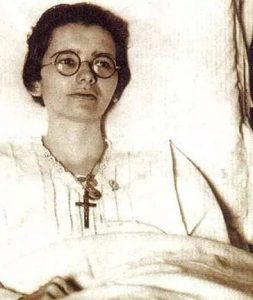
more attuned to God following the death of her older sister from typhus.
Having recovered from the same disease that killed her sister, she nevertheless remained in fragile health, becoming partially-paralyzed with poor eyesight. Now hyper-sensitive to light, she was obliged to remain an immobile recluse in a dark bedroom.
Medical advances now suggest that Marthe Robin was suffering from encephalitis, although doctors did not know this at the time. As she suffered with the disease for 51 years, she was reported to have received both the stigmata and visions of Christ and Our Lady. She lived only on the Eucharist (no other food!) from 1930 until her death in 1981 at age 78.
Marthe was known to have united her 50 years of suffering to Christ’s passion, and thus, more than 200 priests showed up at her funeral mass. Her local French diocese declared her ‘venerable’ in 2014.
Born in Belgium in 1831, Adele Brise and her parents immigrated to Wisconsin in 1855. In her mid-20s, she reported seeing a woman surrounded by a bright light, but was frightened and prayed until the vision vanished.
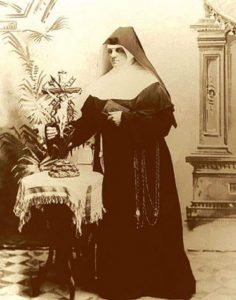
Walking to mass a week later, she again saw the apparition, but the companions by her side said they saw no one. Talking to the priest after Mass that morning, she was advised to ask the woman of light her name and purpose for coming.
Heading home that same afternoon, she again came in contact with “the lady,” and when asked who she was, the woman said: “I am the Queen of Heaven. Gather the children in this wild country and teach them what they need to know for salvation.”
For the rest of her life, Adele Brise’s mission involved teaching children, first from home-to-home and then later in a small Wisconsin school house. She gathered like-minded women together and they formed a lay-run Franciscan community, wearing habits but never taking official religious vows to become nuns. Adele died in 1896, and the Diocese of Green Bay is now gathering information to formally open her cause for canonization.
Interestingly, during Adele’s lifetime, a devastating forest fire in 1871 destroyed most of Door County, Wisconsin, killing two thousand people (the most destructive fire in U.S. history). When the firestorm threatened her school and chapel, Adele stayed and gathered survivors with her, praying that Our Lady protect them. Everyone in that chapel survived that day, but the entire land around it was scorched beyond recognition. This Marian apparition is the only one to happen in the United States that has been formally approved by the Catholic Church.
Born in Dublin in 1802, Mary Frances Clarke was fortunate enough to attend school through eighth grade and later acted as secretary and bookkeeper for her father’s leather business. When the plague broke out in Ireland, she and some
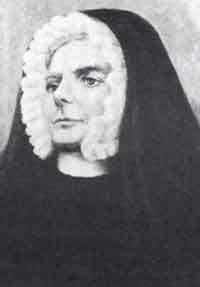
friends moved to the slums of Dublin to begin a school for girls who lost their parents.
When a missionary priest came to Ireland and spoke of the need for help in the U.S., she gathered her teachers and sailed for Philadelphia, where they worked in a garment factory until they had enough money to begin a girls’ school in
their new city.
In Philly for 10 years, she founded a religious community known as The Sisters of Charity of the Blessed Virgin Mary and started two Catholic schools in the Delaware Valley. A chance encounter with the bishop of Dubuque, Iowa, opened the door to moving there to begin Catholic schools on the prairie.
When anti-Catholic rioters in Philadelphia destroyed Mother Mary Frances Clarke’s school, she and her community relocated to Iowa, never to return East. Dubuque became their home base and schools spread to Wisconsin, Chicago, Wichita and San Francisco.
Mother Mary Frances died at age 84 in 1887 after a brief illness, and Clarke University in Dubuque is named for her. Her order and the diocese are considering opening her cause for canonization.
Born in Montreal in 1838, Francis Xavier Prefontaine was the eldest of five children in a French-speaking, devout Catholic family. Immediately upon graduation from his local Catholic high school, he entered seminary in Quebec.
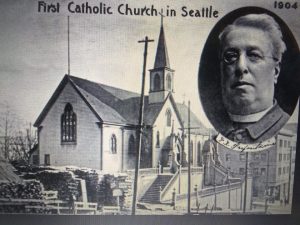
After his ordination in 1863, he was sent to serve the missionary Church in the American Diocese of Nesqually … now known as the Archdiocese of Seattle. He would never return to Montreal again.
Traveling tirelessly throughout the Pacific Northwest, he sailed in canoes with Native Americans, learned their languages and built churches and schools from Tacoma to the Puget Sound.
Perhaps Monsignor Francis Xavier Prefontaine’s biggest accomplishment was beginning a Catholic Church in the Pioneer Square section of Seattle, where at the time only 10 Catholics lived. He was warned it would fail and Seattle was a lost cause. Today, over 900,000 people identify as Roman Catholics in that city and its suburban counties.
Monsignor Prefontaine died in 1909 at the age of 70, leaving Seattle a sum of money for a fountain to be placed in a public square for all to enjoy. The Archdiocese is now compiling information to open his cause for canonization.
Mattie Stepanek was born in Rockville, Maryland, in 1990, he and his older siblings as well as his mother suffered from a rare form of muscular dystrophy. After the death of his brother Jamie, he began writing poetry by age 4 in

order to express his heart and his grief.
As he entered elementary school, he faced the divorce of his parents as well as the deaths of his remaining siblings from the same neuromuscular disease. Despite the fact that it was continuously weakening him and his mom, he kept the faith and continued writing.
By age 8, he was a best-selling published author, an inspirational speaker about the power of peace, a frequent guest on ‘Oprah,’ and had still managed to obtain his Black Belt in martial arts while keeping up with school work.
Mattie Stepanek died in 2004, a few weeks short of his 14th birthday. To this day, his Mom carries on her son’s peace mission for all humanity while she is still able. Mattie’s personal philosophy? “Play after every storm.”
Members of “Mattie’s Guild” based in the Archdiocese of Washington, D.C. have begun gathering information about this young man in order to open his cause for canonization. Quite a few believe he was given mystical gifts due to his willing embrace of suffering.

Born in Lithuania in 1880, Sister Maria Kaupas immigrated to the United States at age 17 to work as a housekeeper for her brother, a priest at St. Joseph’s Parish in Scranton, Pa.
Overcome by homesickness, she returned for a while to her homeland but not before she was inspired by two significant experiences while living in Scranton: she loved the nuns who taught in her brother’s parish, and her Lithuanian countrymen living in America desperately needed help in learning both English and the faith.
Told by her brother that local priests were willing to sponsor a new community of religious sisters in America, she trained with nuns in Switzerland in 1902 and then came to the Diocese of Harrisburg, Pa., to begin her own community after spending more time learning American customs with the Sister, Servants of the Immaculate Heart of Mary.
In 1907, Sister Maria Kaupas began a new community known as The Sisters of St. Casimir, whose original purpose was to teach in Lithuanian schools throughout the United States. Locally, Villa Joseph Marie High School in Holland, Bucks County, Pa., was begun by Sister Maria’s congregation and is still going strong.
Sister Maria died in Chicago (at her mother house) in 1940 at age 60. She was recently declared ‘venerable.’
Born the 8th and final child of Catholic converts in 1860, Father Thomas Frederick Price was raised in Wilmington, North Carolina, and was deeply influenced by his parish priests, one of whom later became the bishop of the entire

state.
Feeling called to priesthood, he was scheduled to enter St. Charles College Seminary in Baltimore in 1876. While traveling there by ship along the Eastern seaboard, however, the boat he was sailing on sank, killing many on board. Thus, he was forced to return home to Wilmington.
Making a second attempt at seminary formation a year later, he was eventually ordained for the Diocese of Raleigh at the pro-cathedral in Wilmington. He was the first native North Carolinian to be ordained to the priesthood.
As a missionary in his own state, Father Thomas Frederick Price eventually felt called to begin a seminary to train Americans for priestly service in the foreign missions. Along with Boston’s Father James Walsh, Price began what is now known as the Catholic Foreign Mission Society of America (popularly known as Maryknoll).
Father Price eventually went to China himself as a missionary with his newly-formed society. It was here in Hong Kong in 1919 that he died at age 59 from a burst appendix. Now declared a ‘Servant of God,’ his heart rests alongside the body of St. Bernadette of Lourdes, to whom he had great devotion.

Born in 1928 in the former Czechoslovakia, Anna Kolesarova was the youngest of three and baptized the day after her birth. Her parents were farmers, and she was known as a simple, modest and hard-working girl.
When she turned 10 years of age, her mother died suddenly and it fell upon her to assume care for the household and her siblings. She would attend daily Mass with friends each day after completing her chores.
By 1944, the final and deadliest phase of World War II began, and when Red Army soldiers entered her town, she and her father and siblings hid in the basement under the kitchen. When they were discovered by a soldier, her father told her to prepare the soldier something to eat in order to prove that the family only wanted peace.
Obeying her father’s wishes and returning to the kitchen, 16-year-old Anna Kolesarova refused the soldier’s sexual advances while making him a meal. Forcing her back into the basement and jumping on top of her, the soldier shot Anna twice in the face and chest (in front of her father and siblings) for not submitting to being raped. Her final words were, “Goodbye, Dad. Jesus, Mary and Joseph…”
Witnesses later claimed that Anna had received both Communion and Reconciliation the day she was murdered. The Church last year declared her a ‘Servant of God,’ and quite beautifully, her family home has recently become both a place of pilgrimage and a holy hangout for Catholic teens of Slovakia.
Born in 1990 in southern Italy along the coast, Matteo Farina was raised by two loving parents (a bank clerk and a homemaker) and had great devotion to Saint Francis of Assisi and Padre Pio even from his youth.

Developing a passion for music from his father, he learned to play several musical instruments and started a high school rock band with his friends called “No Name.”
Known lovingly by his friends as “the Moralizer” (his nickname) due to his love of God and desire for peace, he had a passion for chemistry, was great with technology, wanted to be an environmental engineer, and dated a young woman named Serena, whom he considered “the most beautiful gift the Lord could give me.” He also requested all gifts for his birthday and Christmas go to the African missions.
Experiencing severe headaches in the Fall of 2003, Matteo Farina underwent many tests and experienced a seizure that impaired his vision, which ultimately led to the removal of a brain tumor in 2005. Many operations followed in the years to come, leading to partial paralysis and the use of a wheelchair until his untimely death from cancer at age 18 in 2009.
Matteo’s canonization process began in 2016 when he was named a ‘Servant of God’ by his home diocese.
Born in Utah in 1904, Cora Evans was raised Mormon and married in the Salt Lake City Temple. In her first ten years of marriage, she and her husband had three children, one of whom died at 10 months of age.
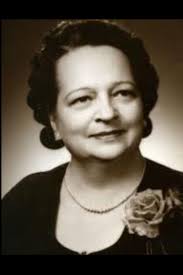
Never feeling truly fulfilled with the Latter Day Saints, she discovered Catholicism one day when, too sick to get out of bed, she was forced to listen to a Catholic radio program on a Utah AM station. From that day, she began to invite the local Catholic parish priest to debate theology with several Mormon bishops.
Ultimately convinced of Catholicism’s truths, she was baptized on March 30 in 1935. Her family soon followed her into the Church, as did many Mormon neighbors. (Some estimates claim more than 200 converts due to her evangelization efforts.)
By 1938, Mrs. Cora Evans (now living in California) began experiencing mystical encounters with Christ, but she never made them public (except to her local priest) and hid both the stigmata and bi-location ability she received from our Lord. Cora eventually died from stomach cancer in 1957 at the age of 52 on the actual anniversary of her Baptism into the Catholic Church.
The Diocese of Monterey, California, has recently opened Cora’s cause for canonization, naming her a ‘Servant of God.’
Born in April 1916, Emil Kaupaun was the son of Czech immigrants who settled in Kansas, he worked on the family farm growing up.
Entering seminary after graduating from Pilsen Public High School, he was ordained a priest for the Diocese of
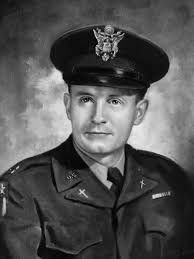
Wichita in 1940. He was an associate pastor for a few years before enlisting as a chaplain in the U.S. Army.
Sent to serve a number of posts in his early days as chaplain, he eventually was stationed on the front lines in the
Korean War. In late 1950, he was captured by the Chinese military after refusing to leave wounded American soldiers and subsequently sent to a prison camp where he sang songs to boost morale among the POWs, offered them his food portions, and held starving and delirious soldiers in his arms until they died.
A year later, Father Emil Kapaun was suffering from dysentery, pneumonia and a blood clot. He was isolated and left alone to die, which he did a month later at the age of 34.
The Diocese of Wichita opened Father’s cause for canonization in 2015, and he has recently been named a ‘Servant of God.’ President Obama also awarded Kapaun the Medal of Honor posthumously for his acts of valor in 2013.
Born in Paris in 1866, Elisabeth Leseur contracted hepatitis as a child and suffered from the disease throughout her life.
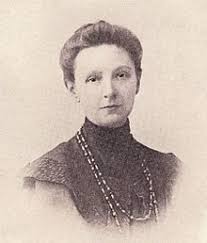
Falling in love with a Catholic physician, she found out shortly before they were married in 1889 that he no longer practiced the faith and considered himself an atheist.
Grieved by the fact that they would remain childless, she remained devoted to her antagonistic husband whose verbal attacks of Christianity only led her deeper into her own faith. As she became bedridden in her 40s due to cancer, she devoted her final years to prayer and hidden sacrifice — especially for the conversion of her husband.
When Elisabeth Leseur died in 1914 at the age of 47, her husband found a letter addressed to him in which his wife predicted he would one day come back to Catholicism and be ordained to the priesthood. At first, he fought back, going so far as to travel to Lourdes to prove the entire place fraudulent. Instead, he had a profound conversion while there, eventually leading him to become a Dominican priest. Fr. Leseur died in 1950 after 27 years of priesthood, much of it spent sharing his wife’s story and journal entries.
Elisabeth was recently declared a ‘Servant of God,’ with a likely feast day of May 3.
Born prematurely to a farming couple in Stevens Point, Wisconsin, in 1944, James Miller grew in time to be 6’2″ and 220 lbs. with a hearty laugh and powerful voice that never failed to attract others’ attention.
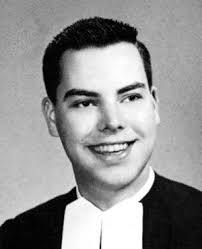
After encountering the Christian Brothers as a student at Pacelli Catholic High School in Wisconsin, he became a
novice in the community in 1962 and took the religious name “Brother Leo William.”
Beginning his teaching career as a Brother in Minneapolis-St. Paul, he taught English and Spanish and coached football. In 1969, he was sent to Nicaragua where he helped build schools and even a paved road system in the rural areas of that country. Due to the Sandinista revolution in the late 1970s, he returned to the Twin Cities for awhile before being reassigned to Guatemala.
It was here in 1982 that Brother Leo was assassinated for his work in educating and improving the lives of the native Guatemalan Indians.
Brother Leo’s beatification is set to take place sometime this year in the Twin Cities.
Born in Puerto Rico in 1918, Carlos Manuel Rodriguez Santiago, was the second of five siblings, one of whom eventually became a Carmelite nun and another a Benedictine monk.
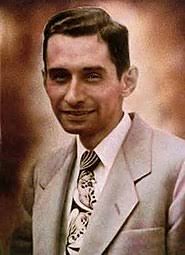
Around the age of 7, a fire destroyed his family home and business, forcing them to live with his mother’s parents. He attended Catholic schools in Puerto Rico and wanted to be a priest, but ulcerative colitis kept him from being accepted to seminary.
Forced to abandon high school due to poor health, he became an office clerk in order to support himself. However, his real passion was evangelization, and he began Catholic publications related to Liturgy, started faith-sharing groups, and taught high school CCD (catechism class).
Perhaps Carlos Manuel Rodriguez Santiago’s greatest gift to the local Church was increasing others’ devotion to and attendance at the Easter Vigil. “We live for that night,” he often said.
Carlos died at age 44 after an operation related to rectal cancer. He is the first person to be beatified from Puerto Rico (2001).
Born in Turin, Italy, in 1901 to an agnostic newspaper editor (father) and a noted painter (mother), Pier-Giorgio Frassati was k
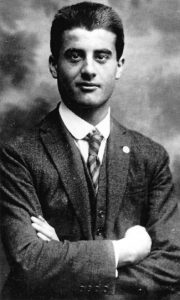
nown even from early childhood as one who had great compassion for the less fortunate.
An average high school student known more for his love of mountain-climbing, authentic piety and sense of social justice, he was once arrested in Rome for protesting with a Catholic youth organization against Facism and the Mussolini regime.
In college, he chose to study engineering, and when offered the choice of a car or money to aid his education, he picked the money in order to assist the poor instead of himself. He also fell in love with an outspoken and genuinely good young woman, but never pursued her over concerns of what his parents would think of her.
In 1925, Pier-Giorgio Frassati was diagnosed with polio after complaining of severe back pains while boating with friends. He died in the arms of his mother on July 4th after receiving Last Rites, his final words being: “May I breathe forth my soul in peace with You.”
It was the poor of Turin who immediately began calling for Pier-Giorgio’s canonization. He was finally beatified in 1990, and has since become a patron for Catholic young adults, Catholic men’s groups, and Catholic sports programs.
Born a slave in Haiti in 1766, Pierre Toussaint was raised Catholic and educated by the tutors of the plantation owners. When a
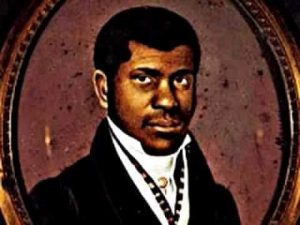
slave rebellion began in 1787, the family who “owned” him took him to New York, where they began a new life.
Trained as a hairdresser to the wealthy once he was settled in the United States, he voluntarily took on the financial support of his master’s wife upon the death of her husband. On her own deathbed a few years later, she demanded that he be set free, and in so doing, he was then able to pay for the freedom of his sister.
Falling in love with a slave girl 20 years his junior, he purchased her freedom, married her, and then adopted his deceased sister’s daughter and raised her as his own. Together, this family supported many New York City charities, including bringing orphans into their home and raising them.
Pierre Toussaint attended daily Mass for 66 years at St. Peter’s Church, very rarely missing a day. He also helped train other Haitian immigrants to cut/style hair, and he was the one responsible for raising funds to build the original cathedral in New York.
Pierre died in 1853 at the age of 87, and remains the only lay person buried in the crypt at the new St. Patrick’s Cathedral on Fifth Avenue. He was declared ‘venerable’ in 1996.
Born in Sassello, Italy, in 1971 to a couple who prayed for 11 years to have a child, Chiara Badano became their greatest blessing. By all accounts, the family of 3 had a strong, healthy relationship with occasional typical teenage outbursts.
Teased for her faithfulness during her high school years and nicknamed “Sister” by her peers, she struggled academically and failed her freshman year. However, she also made some good friends, loved coffee and ’80’s pop music, and was an avid tennis
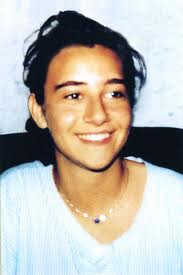
player.
Shortly after joining an Italian Catholic organization called Focolare (which creates encounters with Jesus Forsaken), she began feeling sharp shoulder pains while playing tennis. Doctors soon determined it to be bone cancer.
By 1989, Chiara Badano was repeatedly hospitalized, refusing morphine so she could stay “aware” and often offering to go on walks with other patients battling depression. One of her final gifts was making reservations for her parents to go on a Valentine’s dinner-date at a local favorite restaurant, for they never left her bedside.
Chiara died in October 1990 after making her Confession and receiving Eucharist. On the day of her funeral, her entire hometown was ordered shutdown by the mayor so that all could attend her Mass. Chiara was declared ‘venerable’ in 2008.
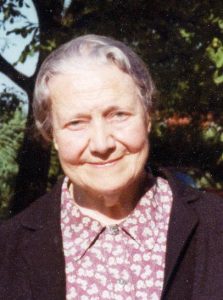
Born in Glendale, Ohio, in 1895, she spent most of her childhood in Butte, Montana, until the age of 15. When her uncle died in a tragic accident in Africa, her parents (both Italians by birth) returned to Parma, Italy in order to care for their aging parents.
After graduation, she became an English teacher for more than two decades in Parma’s school system. At the same time, she
became a lay member of the local Benedictine religious community and was known locally for her many charitable contributions to poor families in the outskirts of her city.
Joining her sister (who became a nun), she spent time in India caring for the sick. It was there, at the age of 50, where she was asked to begin a female branch of the Xaverian Missionaries. At first she declined, declaring: “I’m really good at spoiling the works of God.”
However, a year later in 1944, an Easter postcard with the words “Give All” changed the mind and heart of Celestina Bottego. This native Ohioan became the Mother Superior of the community she founded, but later resigned so that other women had opportunities to develop leadership skills. Mother Celestina died in 1980 and was declared ‘venerable’ by Pope Francis in 2013.
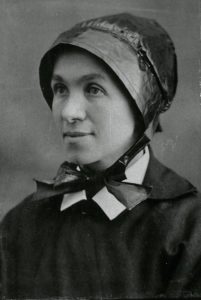
Baptized Rosa-Maria in 1850 in Genoa, Italy, Sister Blandina Segale, moved with her family to Ohio at age 4. From an early age she desired to join the religious sisters who had a profound impact on her young life and in her new city: the Sisters of Charity of Cincinnati.
Joining the convent at age 16, she was first assigned to teach grammar school in Dayton but was later sent on mission to both Colorado and New Mexico, where she established both Catholic and public schools in those states.
Throughout her time in the Southwest, she became known for her advocacy against the then-common practice of lynching. In Santa Fe, she built schools, a hospital, visited miners on site, and even nursed famed outlaw Billy the Kid while he was in prison.
Sister Blandina Segale eventually returned to Cincinnati, where she died in 1941 at the age of 91. Many fascinating legends have arisen in American pop-culture around the “Nun with Spurs,” including character portrayals based on her life in the TV and motion picture Westerns popular in the 1950s and ’60s.
Sister Blandina’s cause for canonization was recently opened in 2015, thanks to the Archdiocese of Santa Fe.
